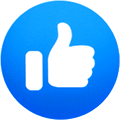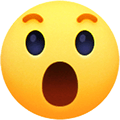
Snackchaser
Member+-
Posts
208 -
Joined
-
Last visited
-
Days Won
11
Snackchaser last won the day on October 9
Snackchaser had the most liked content!
My Info
-
Gender or Couple
Couple
My RV or Travel Trailer
-
Do you own an Oliver Travel Trailer, other travel trailer or none?
I own an Oliver Travel Trailer
-
Hull #
1027
-
Year
2022
-
Make
Oliver
-
Model
Legacy Elite II
-
Floor Plan
Standard Floor Plan
Recent Profile Visitors
1,570 profile views
Snackchaser's Achievements
-
Wayfinder, you are correct, this thread got convoluted and confusing. You mentioned that you plan to upgrade your power converter/charger to handle lithium, and that you already have the Xantrex 2000 inverter. I have good news for you! I'm pretty sure all the Xantrex inverters already have a built in converter and charger. Your PD converter/charger is redundant. You don't need it and should probably take it out. A made a little sketch of how a lot of the Olivers are set up. This shows the configurations with and without the optional inverter, and the front generator receptacle with Automatic Transfer Switch. Different years may vary. Cheers! Geoff
-
The charging voltage profiles for lithiums are critical, and consequently most lithium chargers have very tight tolerances, typically within 0.1 volt. PD's are considered good, and their output has been reported to be from 14.4 up to 14.6 volts. There is also tolerance of whatever measurement device was used, a typical DIY multimeter has a tolerance of 0.5%. With this information, it looks like you are safely within the margin of error, and the battery company info. However, It wouldn't hurt to measure voltage with a known precise meter for peace of mind.
-
Stay away from the cheapies! We live on the coast in a very wet redwood rainforest and have tried several Peltier electronic type portable dehumidifiers from Amazon that were absolute garbage. We found that the Afloia Q3 Portable 20oz was the least worthless Peltier, but it's no longer available in Amazon. I wouldn't recommend any of the Peltier's anyway. They're rated in Ounces of water compared to compressor type dehumidifiers that are rated in Pints... it's a bit of a giveaway! The Peltiers are cheaper, smaller, and lighter, and most compressors are too large and heavy for the Oliver. But I've been eying the Ivation 14.7 pint compressor for under $200. The Ivation is the smallest compressor I've seen at 7x7x18 inches, 2 lbs. It has a drain hose so it doesn't have to be emptied all the time🙏 I'm thinking it will fit on the counter and drain into the sink. It's even advertised for RVs! Hope that helps! Cheers! Geoff.
-
JD is right, your numbers seem too low. This can be caused by several things. Most frequently it's low gas pressure in the burner caused by a restricted orfice jet clogged with debris. If fan runs without heat then could be the Sail Switch sticking. They can get corrosion on the pivot and need to be cleaned. If the gas sounds like it's pulsing, and you hear clicking, then it could be a failing Limit Switch. Then there is the flame sensor, looks like a thermocouple rod, they can get sooty from a poor flame. Take a look and listen while the furnace running; you should hear the gas roaring with a good steady burn. If it's weak or whistles then check the orfice. Flame should be steady and strong, not yellow. If it cycles about every minute-- with a burn then a click, then it's likely the limit switch. There are videos for all of this. I'd recommend shutting off the gas, opening the unit up from the outside, and just doing a thorough inspection and cleaning of things that you can easily access. Then you can try it again and see how it works. Stay warm and check out the Borrego Springs underground visitor center. I helped build it about a half a century ago. Cheers, Geoff
-
Hi Chris, I’m sorry to read about your jack issues on the road! I’m a little late to the party, but I can offer some switching information and a troubleshooting procedure. Or I could swing by your house if you still need help when you return. I read back on this thread and noticed that the question of why the motor has 3 wires was never answered. Per the Barker schematic, it looks like the jack motor should have only two wires, so the third wire creates confusion. The smaller gauge black (-) and red (+) wires are the motor leads, the larger black wire is a second ground to ensure good grounding of the motor. The toggle switch is wired to reverse the polarity of the motors leads, which reverses the motor for up-down travel. I’ve never actually looked at the jack’s toggle switches, but a reasonable guess is that they are DPDT (Double Pole, Double Throw) switches with a spring-back neutral (off) center position. They would have external jumpers that are’t seen in the Barker schematic. I filled-in the “likely” missing detail in the Barker schematic and included a sketch of the internal switching of a DPDT switch, the center row of terminals are common. Your rear jack doesn't include the head unit with the light, but the toggle switch should be the same. The fuse will be on the + feed wire, and the - ground terminates on the main ground bus with all the yellow wires. Oliver choose yellow for ground wires, but I don’t know if that holds true on older models too. Test across the two center (common) terminals with a multimeter in the dc volts setting. Use pointed probes being carful not to short across the switch terminals. You will need a second person to operate the switch: With the switch in center off position - 0 volts With switch down - around 12 volts With the switch up - around 12 volts (FYI - the polarity will be reversed). This will tell you if the switch is working, and if there is voltage to the switch. If the switch works, then the trouble is in the wiring between the switch and motor, or the motor itself. If there is no voltage on steps 2 or 3, then recheck the fuse and /or the wiring between the fuse and power source, or look for an open ground wire. Hope this helps ! Cheers! Geoff
-
Sure! Each laptop is working independently so it only comes down to the internet "Bandwidth," which simply means how much data can be transmitted over time. Typical Starlink connections are very fast, usually greater than 100 Mega bites per second (Mbps) so you can easily stream video on more than one device at a time. That's why trailer park internet can be so slow; the more users means less available bandwidth.
-
Run 12v System w/out Batteries in Oliver 1
Snackchaser replied to GeoffChapman's topic in Mechanical & Technical Tips
With all other loads turned off (as to not overload the Jackery) just hook your Jackery neg to the ground buss with all the yellow wires, and the Jackery positive to the big red wire input of your 12 volt fuse panel . Your pump will then operate as normal. Otherwise you will have to cut the wire splice at the pump to feed it. -
Thanks! But I might have some involvement with it being there😉
-
Oliver spotted in a Polaris Off Road video! The Oliver can be seen briefly in several scenes of the video about Cerro Gordo Ghost Town and historic silver mine.
-
No, a voltage regulator is not advised for the Starlink mini because it already operates from 12 to 48 volts DC. As was the jest of this thread, it's actually necessary to boost the voltage if using the supplied long cord in a 12 volt system due to the voltage drop. When I started this thread, I had one of the first Minis and there were no accessories or aftermarket options to allow it to work on 12 volts without either boosting the voltage, or shortening the cord. So I utilized a robust Vctron voltage booster that's wired to turn-on whenever the Mini is plugged in. I still use that system and, IMHO, it's still the best and simplist way to go. Of course, you can always use the supplied AC adapter that puts out 48 volts DC if you have an inverter, but that will suck down your battery a lot faster. These days there are more options and shorter cords if your mini is going to be mounted close by. However, it's often necessary to move the Mini further away for it to have a clear sky view, and in such case you need to boost the voltage to account for voltage drop from the longer cord. Some people use a POE injector (Power Over Ethernet) that can supply power through an ethernet cable that is plugged into the auxiliary ethernet port. Others use portable battery packs. I make snap-in re-chargeable battery packs for taking my mini to other campsites and such, but they have limited battery life. Because the Mini has a built in Router, it looses WiFi signal, and thus internet speed, the farther away it is. Mine is hopelessly slow if I use the entire cord length. So a great accessory is the Starlink Mini Router. They are inexpensive, and you won't often need it. But when you have a situation where your Mini is placed farther away for a clear sky view, then the router will save your day! See my post "The New Starlink Mii Router, for what ails you." So you will need to decide how you want to power your Mini based on how you plan to mount it and use it. Then you can make an informed decision on how to power it. Hope that helps! Geoff
-
This is a confusing topic even for some electricians, but adding a new 120 volt, 30 amp RV outlet in your garage, or outside, will require GFCI protection per 2023 NEC. However, adding a building extension usually does not require that you update existing wire to code. That would be up to your particular jurisdiction. Most of the common home panel manufactures offer 120 volt, 30 amp GFCI breakers for around $60. Check your panel label because many have interchangeable breakers like Murry and Siemens or Eaton and Cutler Hammer. It's also acceptable to use one leg of a 240 volt GFCI breaker to feed a 120 volt circuit.
-
Don, Take a look at the post "Norcold fridge hinge availibility issues." There are some alternate solutions and links to videos to install new hinges, which otherwise can be tricky. Also note that the IFiXiFi aftermarket hinges don't have the stop that prevents the door from opening greater than 90 degrees. Personally, I think that's a good thing because that's what caused mine to break in the first place. The IFiXiFi hinges have good springs that holds the door tightly closed. This Dometic hinge installation video was really helpful and it is simular to the Norcold design.
-
No worries yet! Not all is lost! There are already companies making aftermarket parts and I’m sure there will be more coming because these units are used all over the world and there is still a demand for parts. I wouldn’t rush out to buy new spare boards without first checking what aftermarket parts are available for your model. Companies like Dinosaur Electronics already sell generic replacement DC boards that fit most Norcold units. Even Amazon carries an aftermarket power board. I’ve previously posted about an Oregon company IFiXiFi that makes quality aftermarket freezer door hinges that are also known to fail and have not been otherwise available. Cheers! Geoff
-
Dometic D21 Cooktop Ignitor Doesn't Spark
Snackchaser replied to OffWeGo's topic in Mechanical & Technical Tips
FYI, the ignitor is polarity sensitive and can be damaged if the 12v power wires are connected wrong. The part number for a new one is 50804 and they are around $40. Check with one of the on-line RV parts stores, and don't trust them if they don't have a contact phone. Or you can try calling Dometic directly. I once had trouble identifying a part for that stove, and Dometic was also unsure of the part number. They ended up sending a box of various parts for free! I think I called them using one of these numbers: 📞 Please contact our support team: 1 (818) 253-1322 Toll Free: 1 (866) 840-0321 📞 Please contact our support team: 1-800-544-4881











